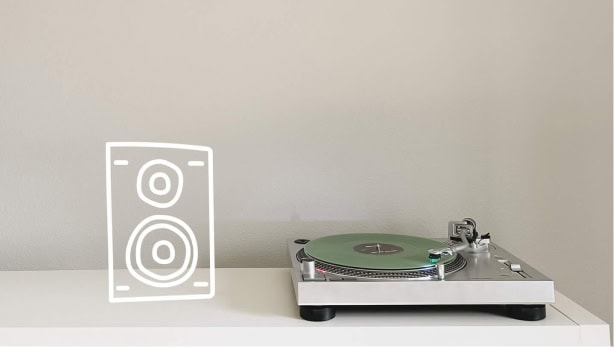A well-crafted return policy is essential for any Shopify merchant, but it’s not just about customer satisfaction. It’s also about protecting your business from fraud and abuse. In the world of ecommerce, where returning items is a common occurrence, a broad or poorly defined return policy can invite trouble. From wardrobing to serial returns, the risks are real, and they can significantly impact your bottom line. This article will guide you through the key elements of creating a return policy that balances customer service with fraud prevention.
Broad return policies on Shopify can invite abuse
A lenient return policy may seem like a customer-friendly approach, but it can open the door to various types of return fraud. One common form of abuse is wardrobing, where customers return items after using them. This form of abuse targets the fashion industry, where customers buy clothing, wear it once for an event, and then return it for a full refund.
Reviewed, revised and approved by Signifyd humans.
Receipt fraud is another issue. This occurs when customers return items without a valid receipt or with counterfeit receipts. Serial returners — customers who frequently buy and return items with or without receipts — tie up inventory and increase administrative costs. Some customers even return stolen goods for store credit or refunds, a practice that can be hard to detect if a receipt isn’t required and your return policies aren’t strict enough.
Open-box fraud is another tactic used by unscrupulous customers. This is the non-fashion version of wardrobing and involves returning items that have been opened and used while claiming they are in their original condition. This type of abuse is common with electronics and other high-value items.
Each of these scenarios highlights the risks of broad return policies and the importance of setting clear conditions for returns.
How customers have taken advantage of a Shopify return policy
The impact of fraudulent returns on businesses can be substantial, ranging from common schemes to more elaborate scams. For instance, a Bradenton, Florida man defrauded Lululemon of $200,000 by placing online orders and then returning empty boxes to receive e-gift cards. He would also return the actual items in-store for additional credit. This type of organized fraud highlights the complexity and scale of return scams.
More routine abuses include customers who frequently return high-value electronics after short-term use. These serial returners exploit generous return windows, leading to inventory challenges and the inability to resell items as new. Wardrobing and other forms of open-box fraud leave retailers with used merchandise that’s hard to resell, eroding both profits and customer trust.
While not a Shopify merchant, Costco’s return policy is well-known for being abused by customers. Costco allows returns for almost any reason. Examples include customers returning couches after years of use or holiday decor post-holiday. However, the company has set limits and will cancel memberships if persistent abuse is detected. While Costco can support the economics of such policies due to its scale and membership business, these practices illustrate the challenges retailers face in maintaining fair and sustainable return policies.
These examples illustrate the diverse tactics employed by fraudsters and the need for robust return policies. By understanding these tactics and implementing stricter policies in the case of suspicious return requests or patterns, merchants can better protect themselves from significant financial losses and maintain the integrity of their return processes.
Taking CX and loyalty into account: Balancing risk of fraud with risk of losing loyal customers
While it’s essential to protect your business from return fraud, it’s equally important to maintain a positive customer experience (CX). Striking the right balance between fraud prevention and customer loyalty is key. A strict return policy might deter fraud, but it could also alienate genuine customers. On the other hand, a lenient policy might keep customers happy but at the cost of increased return fraud.
One approach is to offer personalized return processes based on customer history. Loyal customers who have a track record of minimal returns could be granted more flexibility, while first-time buyers or those with suspicious activity might face stricter policies. This approach helps prevent fraud while maintaining customer trust.
However you structure your return policies, transparency is crucial. Clearly communicate your return policy on your website and in post-purchase emails. Make sure customers understand what’s expected of them and what the consequences are for abusing the policy. This clarity helps prevent misunderstandings and ensures that your policy is seen as fair and reasonable.
How to write a Shopify return policy that reduces return fraud: What to include, what to exclude, how to enforce
You can modify your returns policy to provide different standards for high-risk and low-risk orders, even going so far as to provide different policies per product category. Creating a return policy that reduces fraud involves several key elements.
What to include
- Clear return windows: Consider the trade-off between discouraging your best customers vs discouraging first-party fraud from your worst ones. 30-90 days is typical, but consider using the shorter 30-day standard for high-risk items. Test different versions of your returns policy to find the best window for your business. You may be able to provide a longer returns window if you have effective fraud or chargeback protection in place.
- Proof of purchase requirements: Always require a receipt or order confirmation to process returns. This helps prevent receipt fraud.
- Restocking fees: For certain items, especially high-value ones, consider implementing a restocking fee. This can deter frivolous returns and help cover the costs of processing returns.
What to exclude
- High-risk items: Electronics, luxury goods, and other high-value items are often targeted for return fraud. This creates a conundrum for merchants, in that people are hesitant to buy an expensive item they can’t return. However you can make conditions more strict. For example, Shopify merchant and luxury brand Louis Vuitton does not accept returns on personalized items, worn or used products, or final sale items. This approach helps the brand protect its high-end inventory from fraudulent returns and abuse. Similarly, many electronics retailers enforce shorter return windows or require items to be unopened and in their original packaging to prevent fraud.
- Non-returnable items: Clearly list items that cannot be returned, such as personal care products, perishable goods, and custom orders. This not only sets clear expectations but also helps prevent abuse.
How to enforce
- Return authorization processes: You can require that purchasers contact you, by web form, email or phone, for a return authorization on high-value items. This allows you to assess the validity of the return and provide a return authorization number. Depending on the level of friction it creates, this approach can have an impact on customer satisfaction so proceed with caution.
- Monitoring and analyzing return patterns: Use data analytics to track return patterns and flag suspicious activity. Customers who frequently return items or engage in other questionable behavior can be placed under stricter return conditions.
- Using technology to flag suspicious returns: Leverage fraud detection tools that can help identify and prevent friendly fraud before it affects your business.
Importance of regular policy reviews and updates based on data
A return policy should not be set in stone. Regularly review and update it based on return data and customer feedback. Look for patterns in online returns that might indicate fraud, and adjust your policy accordingly. This proactive approach will help you stay ahead of emerging fraud trends and ensure that your return policy remains effective over time.
Shopify’s return policy template
For those looking to create or revise their return policies, Shopify offers a returns policy template generator that can serve as a useful starting point. However, it’s important to customize it to fit your specific business needs and incorporate the fraud prevention strategies discussed above.
Once you have output your template returns policy, review it with your team and consider the changes suggested in our sample policy, below.
Finding the balance
A balanced return policy is essential for protecting your business from fraud while maintaining customer trust. By carefully crafting your policy, monitoring return patterns, and making regular updates, you can reduce the risk of abuse and ensure that your business thrives in the competitive ecommerce landscape.
Sample policy
This model policy, based on Shopify’s free template generator, has been modified to highlight key policy aspects you should consider for your own policy. Text to be replaced is marked by strikethrough and text to be added is in bold.
We have a 30-day return policy, which means you have 30 days after receiving your item to request a return. starting from the day you receive your item, to request a return.
To be eligible for a return, your item must be in the same condition that you received it, unworn or unused, with tags, and in its original packaging. You’ll also need the receipt or proof of purchase.
We reserve the right to decline return requests if patterns of abuse, such as frequent returns or use of items before returning, are detected.
To start a return, you can contact us at [email address]. Please note that returns will need to be sent to the following address: [Return mailing address]
If your return is accepted, we’ll send you a return shipping label, as well as instructions on how and where to send your package. Items sent back to us without first requesting a return will not be accepted. Unauthorized returns, or returns sent without prior approval, will not be processed.
You can always contact us for any return questions at [email address].
Damages and Issues
Please inspect your order upon receipt and contact us immediately if the item is defective, damaged, or if you receive the wrong item, so that we may evaluate the issue and make it right. Please inspect your order upon receipt and contact us within 5 days if the item is defective, damaged, or if you receive the wrong item, so we can evaluate and address the issue promptly.
Certain types of items cannot be returned, like perishable goods (such as food, flowers, or plants), custom products (such as special orders or personalized items), and personal care goods (such as beauty products). We also do not accept returns for hazardous materials, flammable liquids, or gasses. Additionally, certain high-risk items, such as electronics and luxury goods, are non-returnable unless they are defective or damaged upon receipt.
Unfortunately, we cannot accept returns on sale items or gift cards. We cannot accept returns on final sale items, gift cards, or items that have been altered or damaged by the customer.
Exchanges
The fastest way to ensure you get what you want is to return the item you have, and once the return is accepted, make a separate purchase for the new item.
European Union 3-Day Cooling-Off Period
Notwithstanding the above, if merchandise is being shipped into the European Union, you have the right to cancel or return your order within 3 days for any reason and without justification. As above, your item must be in the same condition that you received it, unworn or unused, with tags, and in its original packaging. You’ll also need the receipt or proof of purchase.
Refunds
We will notify you once we’ve received and inspected your return to let you know if the refund was approved or not. If approved, you’ll be automatically refunded on your original payment method within 10 business days. Refunds will only be issued to the original payment method used during the purchase. Please remember it can take some time for your bank or credit card company to process and post the refund too.
If more than 15 business days have passed since we’ve approved your return, please contact us at [email address].
Please note: Each company must thoughtfully consider its specific return policy needs. This template is a starting point, but we recommend consulting with a legal professional to ensure your policy complies with applicable laws and best suits your business.
Shopify drives your sales, Signifyd secures your profits. Approve more orders, eliminate fraud, and scale your Shopify business with our 100% financial guarantee.









